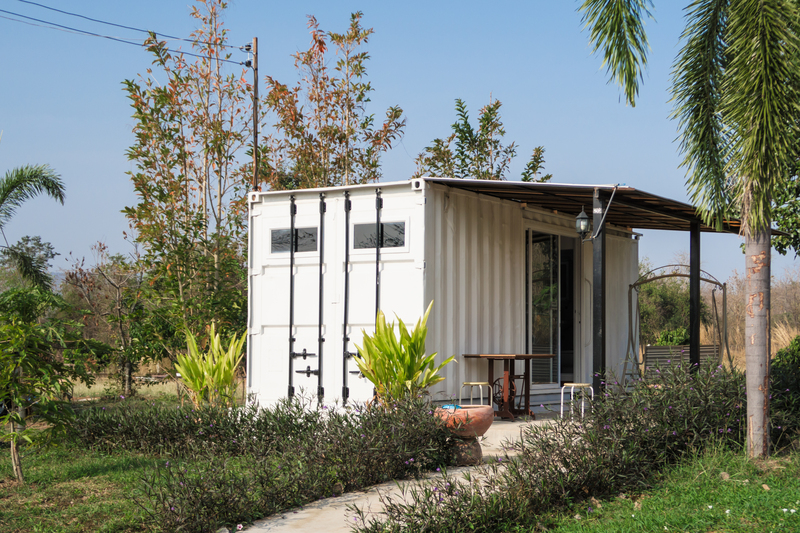Tips to Ensure PPE Waste Doesn't Harm the Environment
The global reliance on Personal Protective Equipment (PPE) has increased dramatically in recent years, particularly due to the COVID-19 pandemic. While this equipment--such as face masks, gloves, gowns, and shields--plays a crucial role in public health and workplace safety, the resulting waste poses serious environmental threats. Consequently, properly managing PPE waste is essential to safeguard our planet's health.
This comprehensive guide covers practical and effective tips to ensure PPE waste doesn't harm the environment. By understanding, reducing, properly disposing of, and considering alternatives to single-use PPE, you can contribute significantly to a cleaner, greener world.

Contents
- Understanding PPE Waste and Its Impacts
- Top Tips for Reducing PPE Waste
- Proper Disposal Methods for PPE Waste
- Reusing and Recycling PPE Responsibly
- Exploring Eco-Friendly PPE Alternatives
- The Importance of Public Education and Awareness
- What Can Organizations Do?
- Conclusion
Understanding PPE Waste and Its Environmental Impacts
The surge in PPE usage has led to an alarming increase in plastic-based medical and protective waste worldwide. Most PPE items are manufactured using non-biodegradable materials such as polypropylene (plastic), latex, and synthetic fibers, which take hundreds of years to break down. Improper disposal can lead to:
- Plastic pollution in oceans, rivers, and landscapes
- Threats to wildlife--marine animals and birds can ingest or become entangled in PPE
- Microplastic contamination--PPE breaks down into tiny plastic particles that enter the food chain
- Blocked sewage systems--discarded gloves and masks clog drainage systems, leading to flooding
- Biohazard risks--improperly disposed contaminated PPE can transmit diseases
Ensuring PPE waste management is both an environmental and public health necessity. Awareness of these impacts should motivate individuals and organizations to adopt sustainable practices.
Top Tips for Reducing PPE Waste and Environmental Damage
Being proactive in minimizing PPE waste is key to environmental protection. Consider these practical strategies:
1. Only Use PPE When Necessary
Adopt a risk-based approach: Not every situation requires single-use PPE. Evaluate the necessity based on the actual risk involved, especially outside healthcare settings. For example, in many public scenarios, reusable cloth masks are sufficient, reducing dependence on disposables.
2. Opt for Reusable PPE When Possible
Select PPE items designed for multiple uses--such as washable cloth masks, face shields, or gowns. This change significantly lowers the volume of waste generated, while also saving you money in the long run.
3. Encourage Bulk Purchasing and Distribution
Bulk buying reduces excess packaging material and minimizes frequent deliveries, resulting in lower carbon emissions and less waste.
4. Choose Certified, Eco-Conscious Brands
Seek out PPE manufactured from recycled, biodegradable, or compostable materials. Some companies now produce biodegradable gloves and compostable masks, helping you minimize your environmental footprint.
5. Store PPE Properly to Prevent Waste
Improper storage may cause PPE to become contaminated or damaged before use, which leads to unnecessary discarding. Ensure PPE is kept dry, clean, and in accordance with manufacturer instructions.
Proper Disposal Methods for PPE Waste
Incorrect disposal of PPE wastes contributes substantially to environmental harm. Here's how to ensure safety and sustainability:
- Never throw PPE in recycling bins. Most PPE is not recyclable in standard municipal systems, contaminating recycling streams and making sorting facilities unsafe for workers.
- Use designated PPE disposal bins. Some communities and workplaces provide labeled bins for PPE. Take the time to locate and use them appropriately.
- Seal PPE in a bag before landfilling. At home, collect used PPE in a small bag, tie it securely, and dispose of it in your general waste bin. This prevents windblown litter and exposure to waste handlers.
- Do not flush PPE items. Flushing masks, gloves, or wipes leads to sewer blockages and marine pollution.
- If sick, take extra precautions. Double-bag all potentially contaminated PPE, label it, and follow your local guidelines for hazardous waste if available.
Tip: Always wash or sanitize your hands after handling used PPE, even if disposed of correctly.
Reusing and Recycling PPE Responsibly
While conventional single-use PPE is challenging to recycle, innovative programs and technologies are emerging:
Specialized PPE Recycling Programs
Some companies (such as TerraCycle and CleanRiver) offer special recycling boxes for PPE waste from businesses, schools, and hospitals. Used masks and gloves collected in these boxes are safely processed and converted into park benches, shipping pallets, or road materials.
- Check if your workplace or municipality participates in a PPE recycling program
- Follow specific instructions for separating and handling PPE
- Support or request such initiatives in your community
Reuse Non-Disposable PPE
Whenever safe to do so, prioritize products meant to be reused. Clean and disinfect PPE items according to the manufacturer's guidelines to extend their lifespan and reduce waste.
*Never attempt to reuse designated single-use PPE items, as this can result in ineffective protection and health hazards.*
Exploring Eco-Friendly PPE Alternatives
Technological advances and consumer demand have led to the introduction of environmentally friendly PPE products. Consider these options when looking to reduce your environmental impact:
- Biodegradable Face Masks - Made using plant-based or compostable fibers, these masks decompose naturally within months after disposal.
- Reusable Fabric Masks - Washable and long-lasting; available in many styles, including options with replaceable filters.
- Natural Rubber Gloves - Derived from sustainable rubber plantations, these are a better alternative to synthetic varieties.
- Face Shields with Replaceable Visors - Only the shield portion is replaced, reducing unnecessary waste.
Before purchasing, verify product claims and certifications to ensure genuine environmental benefits.
The Importance of Public Education and Awareness
Awareness is crucial in preventing PPE-related environmental harm. Communities, employers, and governments must work together to educate people on:
- Why it's important to dispose of PPE correctly
- Recognizing which waste bins to use
- How individual PPE choices add up to significant environmental impacts
- Alternatives to single-use PPE
Harnessing the power of social media campaigns, infographics, school programs, and workplace training can ensure everyone knows how to responsibly manage PPE waste.
What Can Organizations and Businesses Do to Minimize PPE Waste?
Institutions and businesses have a significant role to play in offering sustainable PPE solutions and implementing environmentally responsible PPE waste practices.
Implement Waste Management Policies
- Set up designated PPE waste collection bins at strategic locations
- Partner with specialized PPE recycling programs where available
- Keep teams informed and trained on changing disposal protocols
Adopt Green Procurement Policies
- Give preference to reusable or certified eco-friendly PPE suppliers
- Encourage product developers focused on sustainability
Monitor and Report PPE Use
- Track PPE purchasing and waste generation
- Set reduction targets and regularly report on progress
Educate Employees and Customers
- Share information on proper PPE use and disposal
- Use clear signage and communication channels
By fostering a culture of sustainability, organizations can contribute vastly to reducing PPE waste and champion environmental health.
Conclusion: Making a Lasting Difference with Sustainable PPE Waste Practices
As society continues to utilize PPE for safety, it's imperative not to overlook the lasting effects of PPE waste on the environment. By applying the tips outlined above--using PPE only when necessary, opting for reusable and eco-friendly products, disposing of waste correctly, supporting recycling innovations, and educating the public--we can all play an integral role in ensuring PPE waste doesn't become a long-term environmental hazard.
Let's turn awareness into action. Remember: every mask, glove, or gown you use and dispose of responsibly contributes to a healthier planet and a safer tomorrow.

Frequently Asked Questions: PPE Waste and the Environment
- How long does PPE waste take to break down?
Most disposable PPE (like masks and gloves) takes decades to centuries to degrade in landfills, polluting the environment if not disposed of properly. - Can PPE be recycled?
Standard municipal recycling programs do not accept PPE waste, but specialized programs can safely recycle certain items when collected separately. - Are biodegradable masks effective?
Yes, when sourced from credible suppliers, biodegradable masks can offer similar levels of protection while minimizing the environmental footprint. - How can I make a difference as an individual?
Choose reusable PPE where possible, dispose of all PPE safely, support eco-conscious initiatives, and educate those around you about responsible PPE management.
By adopting sustainable habits and spreading the word, we can collectively ensure PPE waste doesn't harm the environment. Let's protect ourselves--and the Earth--one responsible action at a time.
